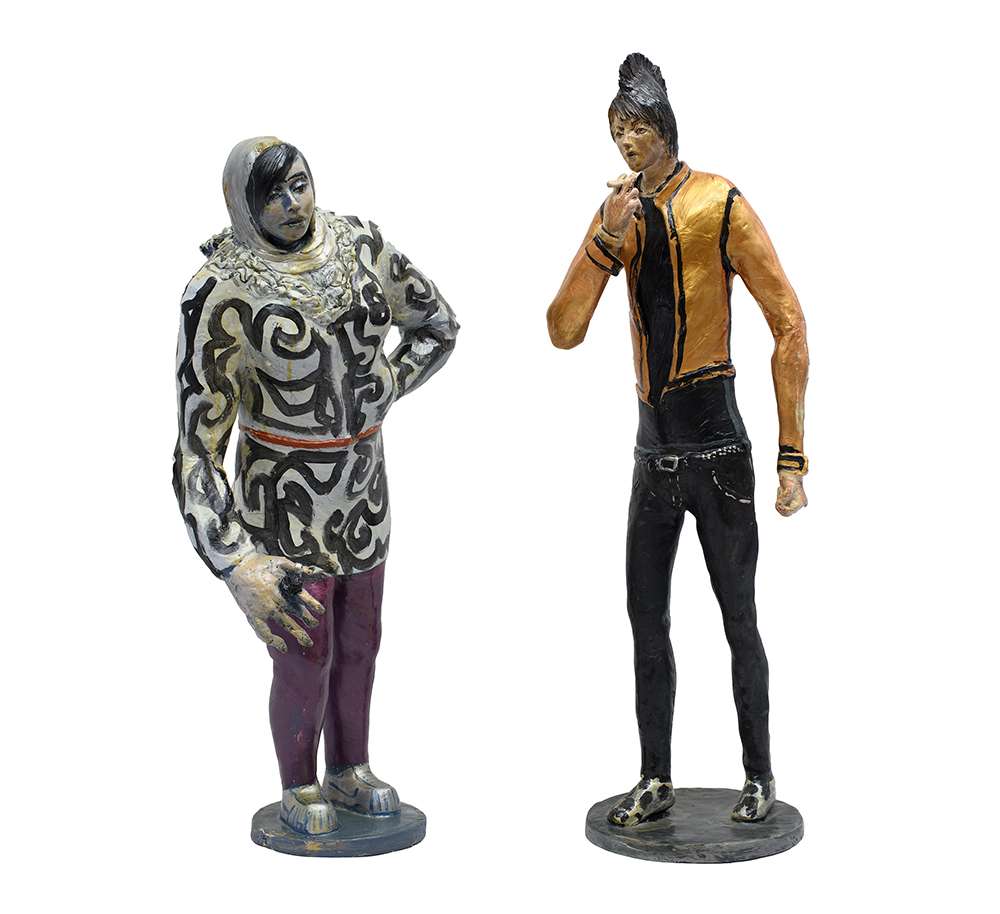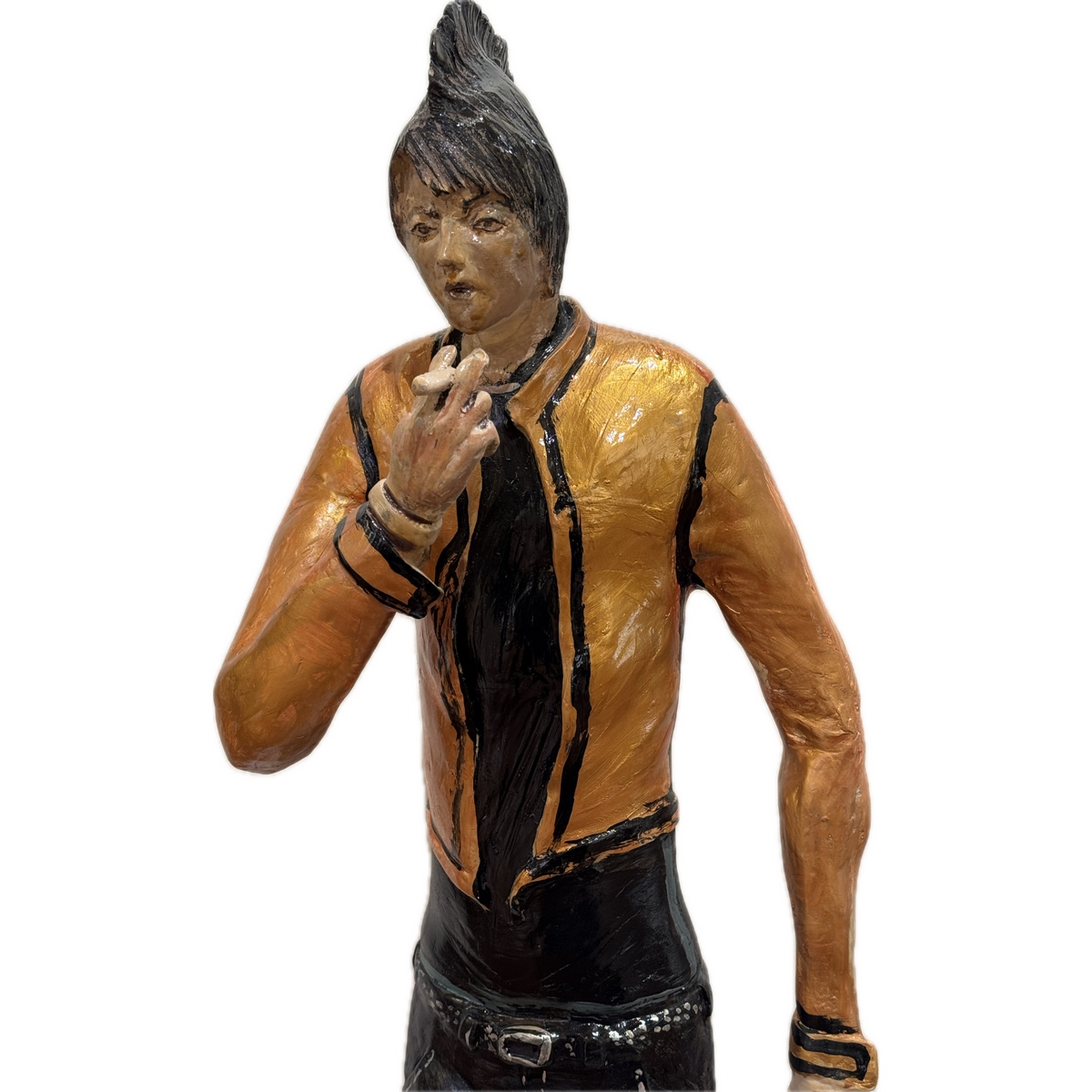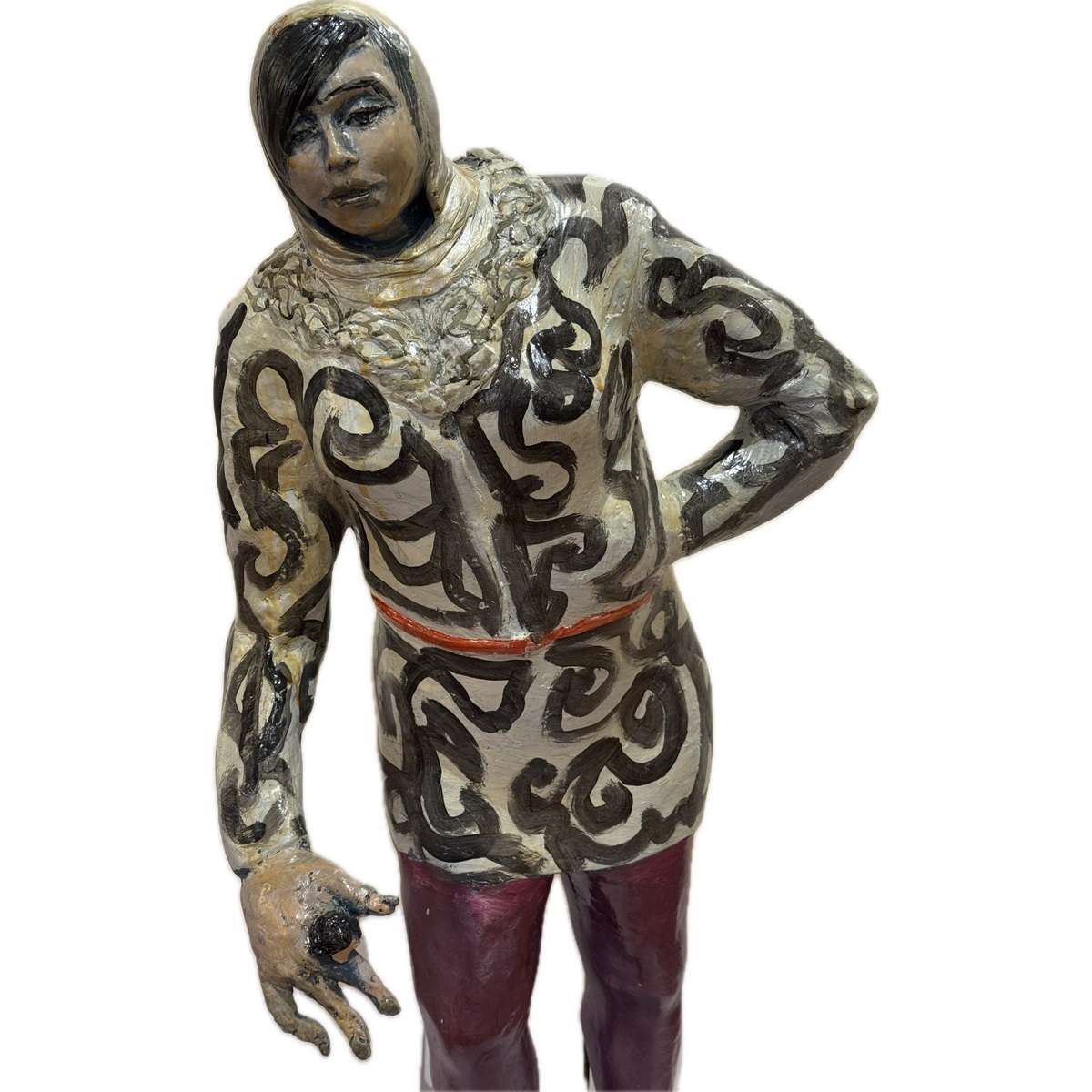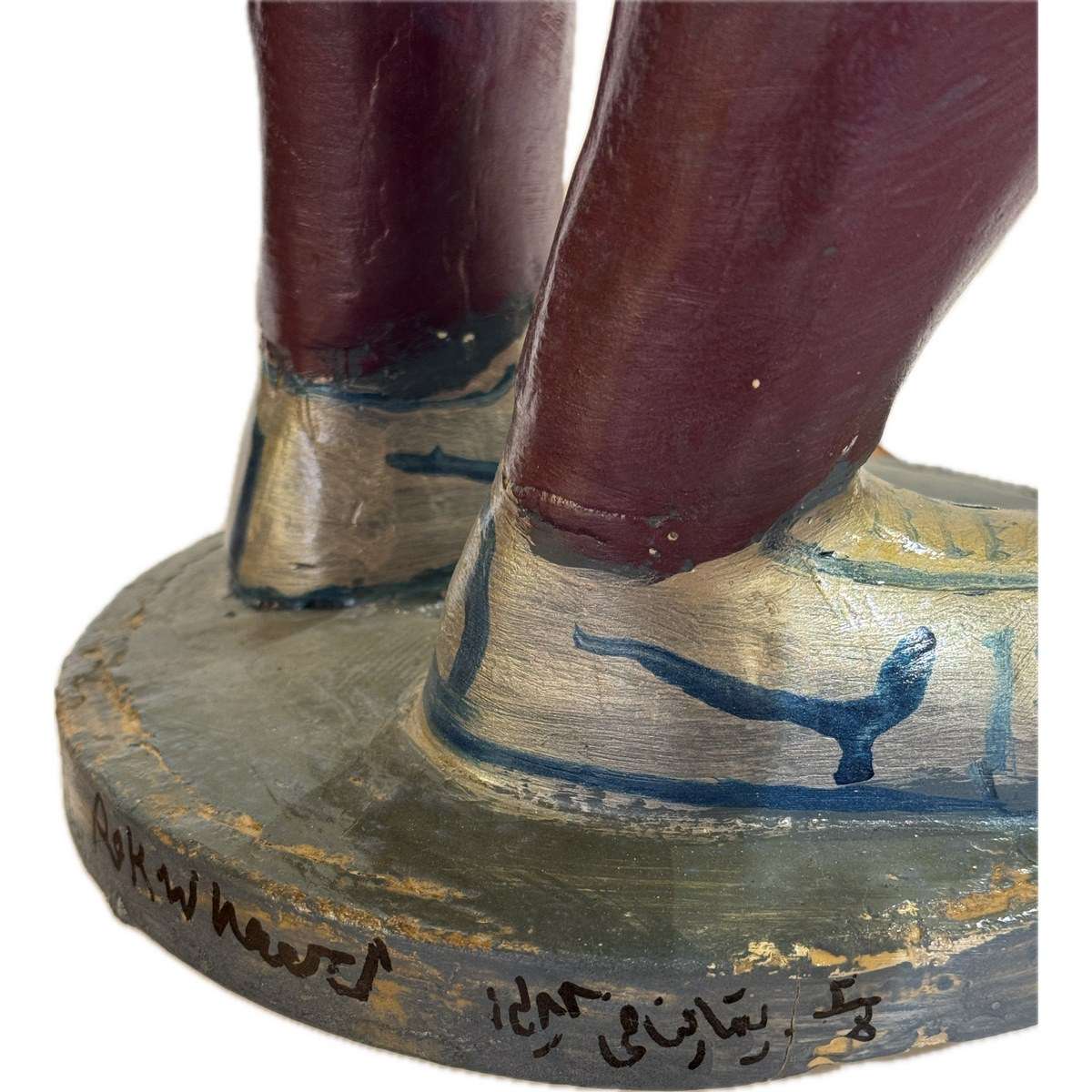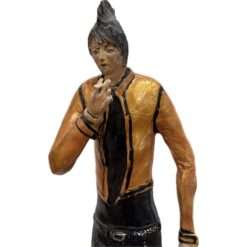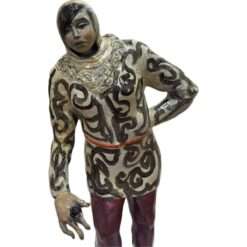ZG2BFRHU01
In the present work, which is a joint work of Fayazi and Rukni Haerizadeh, the figures of a young woman and a young man are depicted, whose form and type of clothing are inconsistent with their predetermined gender: the figure of a young man, slender and elongated with delicate hands, a delicate face, an operated nose, and gelled hair, is far removed from the concept of man and masculinity in the collective unconscious of Iranians; The same man who comes to mind when using the name “Abbas Agha” and the artists have named their statue after that. In other words, in the representation of the man, there is no mention of the strength, masculinity, and ambition of the Iranian man, and its place is filled by a kind of femininity and elegance, and in this way Abbas Agha has taken on a new nature.
The same opposition and contradiction can also be seen in the female figure. The girl is seen with strong arms, standing firmly and authoritatively. Although her black hair and part of her face are covered by a headscarf, her strong and square-shouldered upper body is far from the concept of “Nanaz Khanum”; a name that is reminiscent of the feminine and weak object of the Eastern woman. In this way, by using the naming of the figures, which stems from the popular mentality and the lack of representation of what is visualized in the mind, the artists have tried to display the gap that has been created between the feminine and masculine objects in the Eastern world and draw the audience’s attention to the new meanings that gender has created in the contemporary world.
| dimensions | |
|---|---|
| technique | |
| product year | 1388 |



 فارسی
فارسی